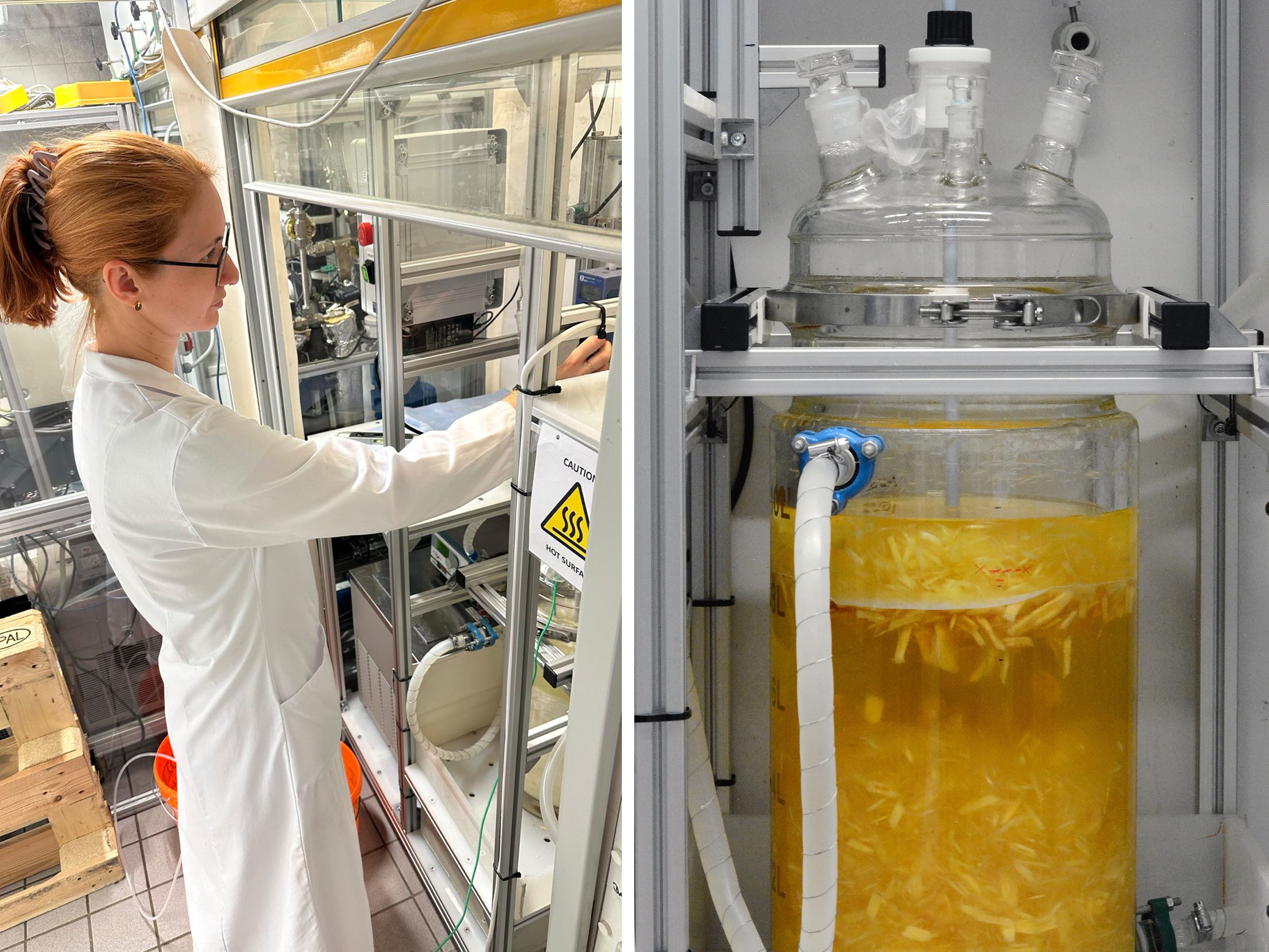From spruce chips to high-quality fibers
Working on a custom 10-L glass reactor at atmospheric pressure, our team explored time-temperature settings for peracetic-acid (PAA) pulping of spruce chips. The goal: produce intact fibers while retaining hemicellulose, a key to strong fiber-fiber bonding in paper sheets and wood-based biocomposites.
What we evaluated
We linked operating conditions to both the fiber state and network performance. After pulping, we examined fiber morphology, formed handsheets, and tested their mechanical behavior before and after mild hot-pressing. A Kraft reference was prepared for context. Using standard paper-testing protocols together with water-retention and crystallinity assessments, we could track how processing choices translate into sheet strength and bonding.
A clear, hemicellulose-rich route
Within the examined operating window, we identified conditions that preserve hemicellulose and deliver well-disintegrated, single fibers. The resulting sheets show marked gains in inter-fiber bonding after hot-pressing, underscoring the role of hemicellulose in network formation. Compared with more severe treatments, the practical setting we recommend balances fiber integrity, yield, and performance, a compelling pathway for valorizing sawmill by-products with modest process requirements.
Why this matters for wood-based materials
PAA pulping is attractive because it operates without high pressure and decomposes into benign products, offering a cleaner alternative to conventional routes. Establishing a robust operating window advances the case for scalable, low-emission manufacturing of fibers for paper and bio-based composite applications.
📄 Read the paper: Tailored holocellulose fibers from spruce wood chips: optimizing peracetic acid pulping conditions (European Journal of Wood and Wood Products, 2025)
🔗 Open access link: https://link.springer.com/article/10.1007/s00107-025-02321-0

 WoodComp3D
WoodComp3D